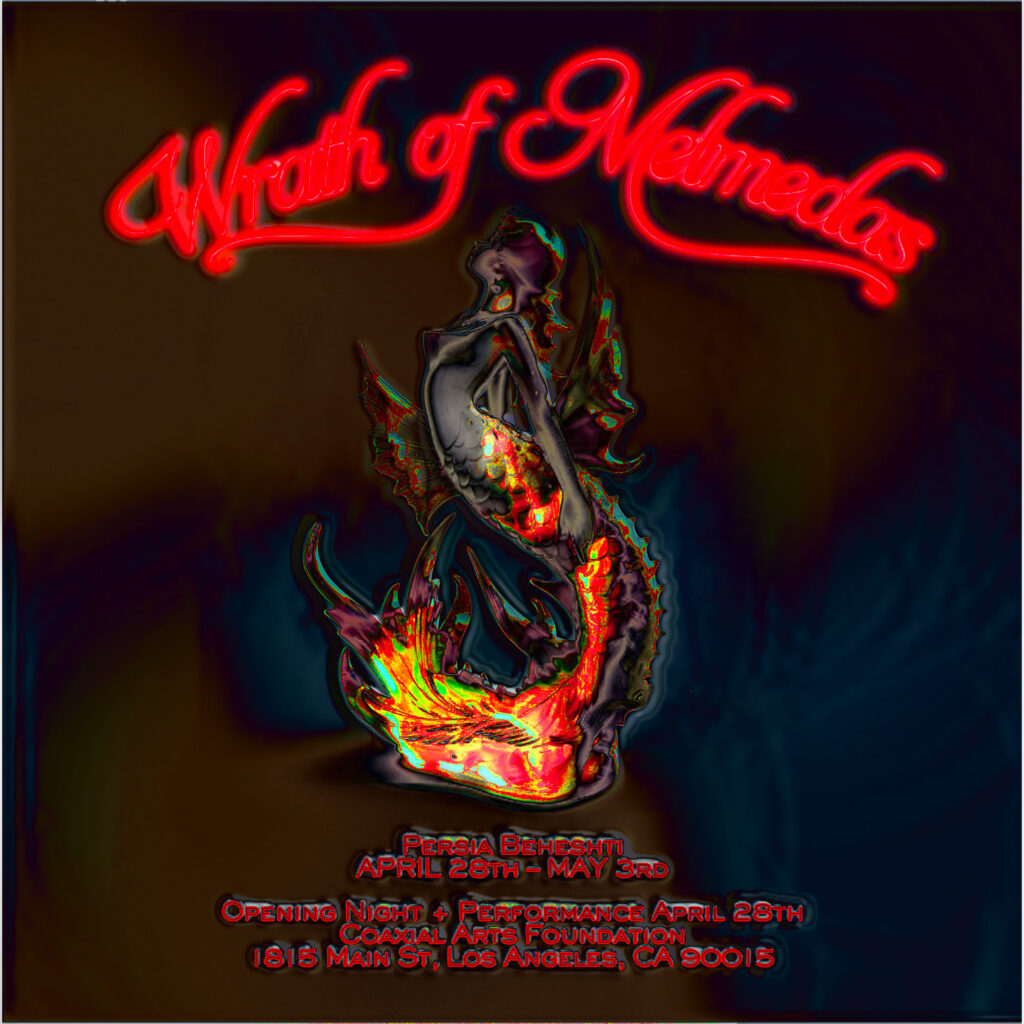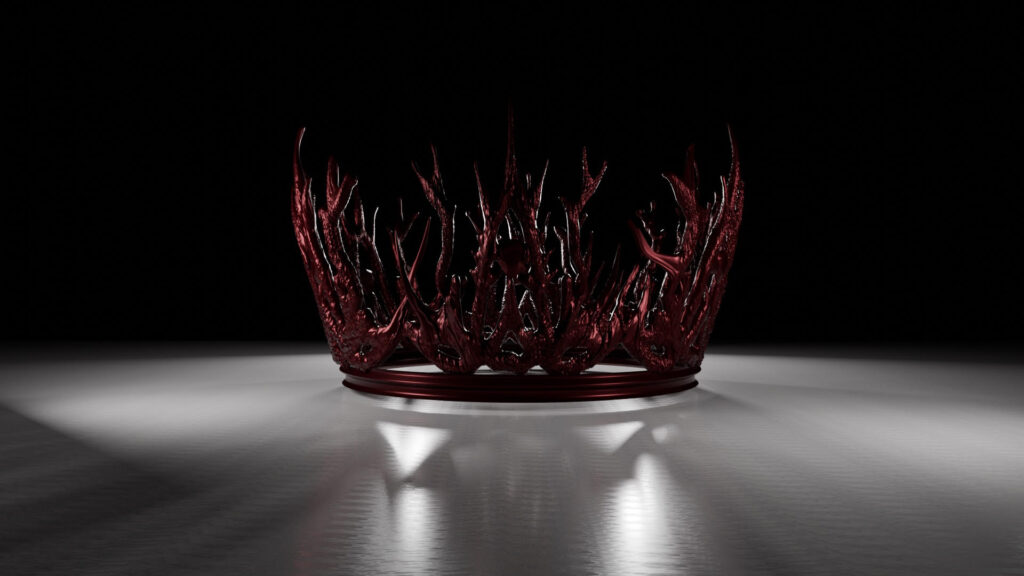
Coaxial Arts Foundation is thrilled to announce LA-based multidisciplinary artist Persia Beheshti as our April 2024 Artist in Residence.
Persia will create a site-specific installation and performance entitled “Wrath of Melmedas” at Coaxial, open to the public April 28 – May 3.
Installation Opening + Performance
Sunday, April 28 | 6:00PM – 10:00PM
Artist Talk
Thursday, May 2nd | 7:00PM – 9:00PM
RSVP

Flyer by: Sami Moubtakir
For most, the Strait of Hormuz has come to be recognized for its strategic placement in the current world order. Everyday, over 30% of global crude oil passes through this body of water. Life on the strait is congested with tankers, navy vessels, and military ships. Within all of this chaos, lies the mystical island of Hormuz. Enveloped in its crimson red, a geological phenomenon. It is a land covered with Salt mountains and caves. Its red sand bleeds into the water, painting the surrounding sea red.
In her debut solo exhibition “Wrath of Melmedas”, Persia Beheshti summons the deity from the Hormozgans’ region’s mythology called Melmedas. Drawing from research done at the Islamic Azad University on the Melmedas folklore, Beheshi summons Melmedas, drawing a parallel between the tale and the contemporary realities present within the Strait.
In the paper “An Anthropological Study of Melmedas in Iran and Siren in Greece,” published by the Islamic Azad University in Iran in 2017, the deity is described as a “a mermaid-like creature with a very beautiful and attractive upper body. In the lower part of her body she has two large, sharp and very dangerous sickles”. The folklore suggests that the deity is known for luring in sails and violently killing them, serving as a warning to intruders that would occupy or otherwise colonize the island.
The centerpiece of the exhibition, the crown of Melmedas which has been eroded under water and washed up on the dry shore, appears as a relic summoning dualities present in our daily lives – life or death, good or evil and the persistence of beauty or the extraction of waterways. A fountain – a centerpiece of all Persian gardens – is filled with red sand as the water has run dry. There is a round shaped inflatable water toy covered in black tar. All that is left is a future of extractions to ponder.
Here, Beheshti prompts viewers to reflect on the complexities of modern-day existence, where the pursuit of extractive resources can both shape and endanger our existence. By intertwining ancient myth with contemporary concerns, Beheshti invites us to consider the implications of our daily actions in a broader context to the world we inhabit. Echoing themes of beauty, danger, and repentance embodied by Melmedas herself, “Wrath of Melmedas” traverses materiality and the alluring force of power itself.
Hormuz Island seen through Beheshti’s work is a garden of Eden. Narratives are weaved out of existing territorial conflicts, and the fruits of good and evil whispered by Melmedas announce the seductive bloodshed of power.
-Residency text by: Mohammad Rezaei

Persia Beheshti, an artist and filmmaker based in the US. She works in the realms of video and sculpture, employing digital softwares to excavate ancient mythologies and evolving narratives that delve into timeless themes. Beheshti’s work engages with mysticism and mythology, which she uses as poignant reflections on contemporary society.
This residency is supported by The National Endowment for the Arts, mediaThe Foundation, Department of Cultural Affairs, Los Angeles and the Pasadena Art Alliance.
